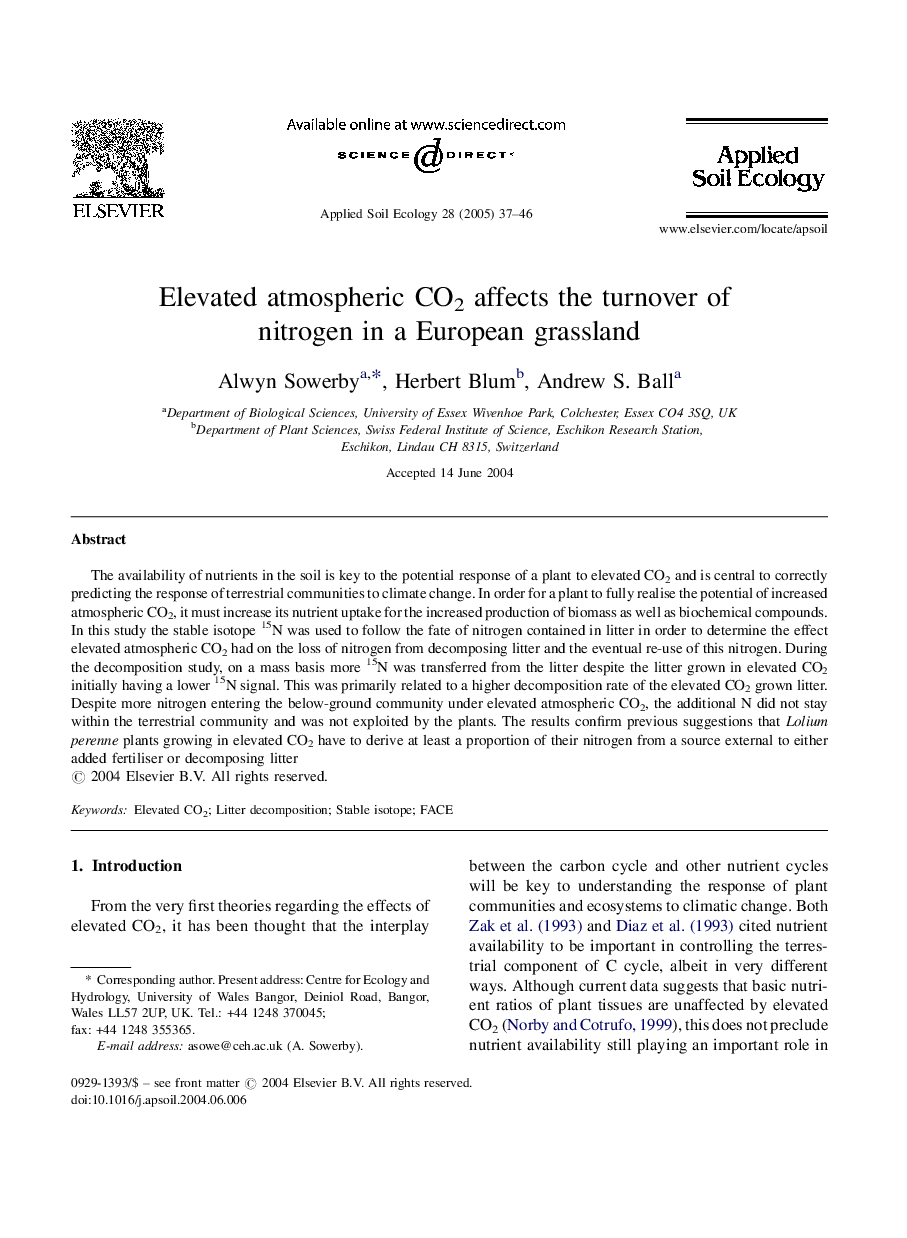| Article ID | Journal | Published Year | Pages | File Type |
|---|---|---|---|---|
| 9445283 | Applied Soil Ecology | 2005 | 10 Pages |
Abstract
The availability of nutrients in the soil is key to the potential response of a plant to elevated CO2 and is central to correctly predicting the response of terrestrial communities to climate change. In order for a plant to fully realise the potential of increased atmospheric CO2, it must increase its nutrient uptake for the increased production of biomass as well as biochemical compounds. In this study the stable isotope 15N was used to follow the fate of nitrogen contained in litter in order to determine the effect elevated atmospheric CO2 had on the loss of nitrogen from decomposing litter and the eventual re-use of this nitrogen. During the decomposition study, on a mass basis more 15N was transferred from the litter despite the litter grown in elevated CO2 initially having a lower 15N signal. This was primarily related to a higher decomposition rate of the elevated CO2 grown litter. Despite more nitrogen entering the below-ground community under elevated atmospheric CO2, the additional N did not stay within the terrestrial community and was not exploited by the plants. The results confirm previous suggestions that Lolium perenne plants growing in elevated CO2 have to derive at least a proportion of their nitrogen from a source external to either added fertiliser or decomposing litter
Related Topics
Life Sciences
Agricultural and Biological Sciences
Ecology, Evolution, Behavior and Systematics
Authors
Alwyn Sowerby, Herbert Blum, Andrew S. Ball,
